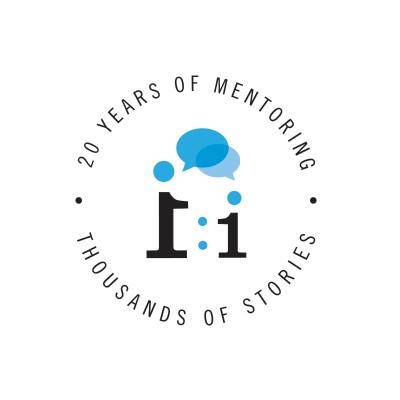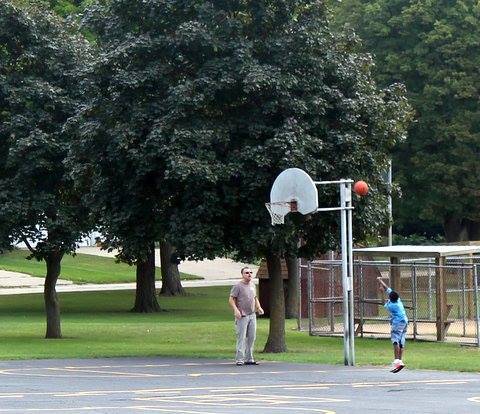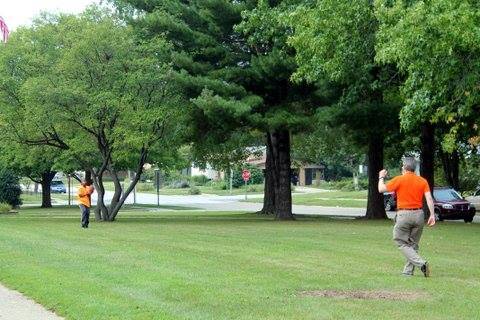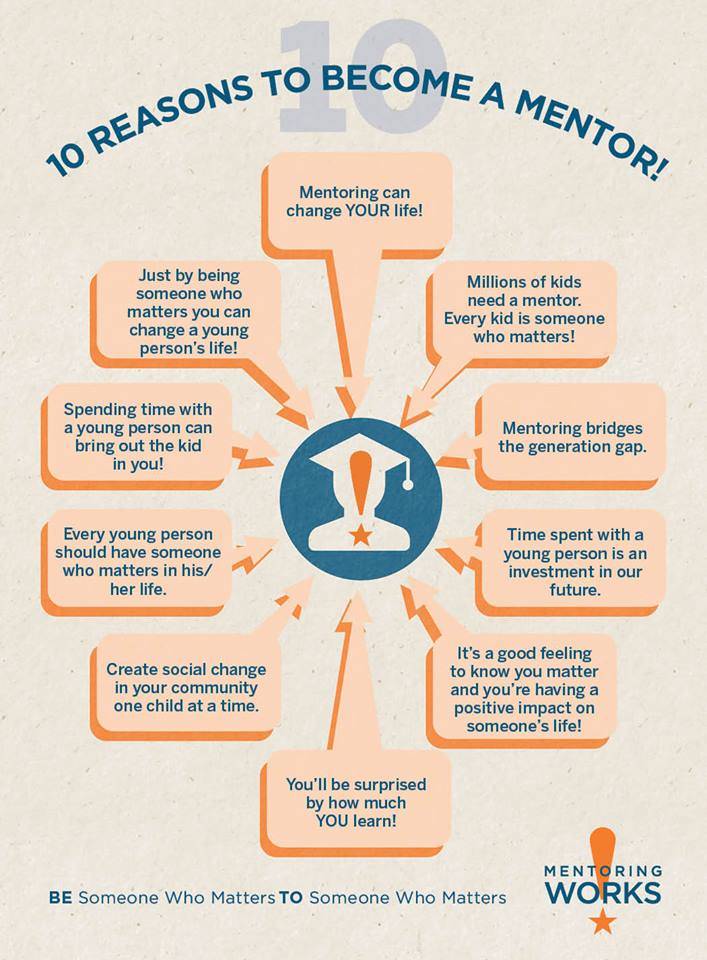The Champaign-Urbana One-to-One Mentoring Program, which has been part of the community for over 20 years, gives students the chance to connect with an adult mentor during the school day. Nearly 700 students are currently part of the program, and thousands more are alumni.

Long term, one-on-one mentoring is available to students in both the Champaign Unit 4 and Urbana District #116 Schools. Mentoring typically begins when children are between the ages of 9 and 11, and mentors are required to make a one-year commitment to the program. Mentors and mentees meet for one hour a week on school grounds. The program includes a scholarship fund: students who remain in the program through high school graduation receive a scholarship for continuing education, which is funded by the Mentoring Scholarship Fund.
I recently talked with Barbara Linder, the coordinator of Urbana’s mentoring program, and two alumni of C-U One-to-One Mentoring about what the program has to offer.
———

Smile Politely: What does the program look for in potential mentors?
Barbara Linder: What we’re looking for in mentors are people who are stable in the community. Generally we do not have undergraduate students as mentors because it’s difficult for them to commit to much more than a semester at a time. We look for people who are good listeners, who understand youth development, and who aren’t there to make a quick fix, but are there to form a relationship.
SP: How did the program get started in this community?
Linder: The program got started in 1994. We just celebrated our 20-year anniversary, and it started as a joint initiative of the University, Parkland College, and both school districts.
In 1992, the decision was made to invite a woman who had coordinated a similar program for 10 years on the east coast to speak about what she was doing. People from all over the community came to that training. People from Champaign-Urbana were seeing the need for exactly what she was describing: kids and pre-adolescents with an adult than they could just talk to.
I attended that training and got really excited about it. I went to our superintendent and he said I could make that program happen at the Urbana Middle School. In Urbana, I was able to create a program with strong support from the schools. The principal at Bottenfield Elementary School got the program started in Champaign.
Since the one-to-one mentoring program started, the idea has really taken root and grown. We started with roughly 40 mentees and now we have close 700.
SP: How do students get involved?
Linder: There is a referral process, but sometimes students refer themselves. Here at Urbana Middle school, because we have so many mentors, students often come to me and ask, “how do I get a mentor?” Most of the kids I have now have referred themselves. And at the elementary schools, teachers, school counselors, or family members can say they want their students to have a mentor.
The kids we look to accept into the program are kids who are on the verge of success. The ones who would thrive with just a bit more encouragement. We generally don’t take kids who have emotional or psychological needs beyond the scope of the non-professionals in our program.
SP: How are mentors trained to work with kids in the program?
Linder: Before mentors start working with students, there is an interview and screening process. Then they have a required two-hour training. We offer three sessions in the fall and two in the winter. If people apply after those sessions, we put their applications on hold till the next semester. The training is interactive and experiential. We worked on the skills that the mentors need to form a relationship with someone they don’t know. Things like non-judgmental listening, understanding that they’re not there to fix a kid, and confidentiality. We also talk about the basics of getting into the school and how to find your kid during the school day. Then there is a follow-up training to answer any questions that might have come up during their first six months. Each elementary school has a 10-hour staff person to support mentors; the middle and high schools have a 20-hour staff person.
SP: What happens during a typical mentoring session?
Linder: Mentors meet with students during one class period per week. At the elementary, they often meet during lunch or a little before or after. The schools all have resources like games and crafts—things that mentors and mentees can do together while they’re getting to know each other and getting comfortable with each other. They might shoot baskets or play Uno. Before Valentine’s Day, I had supplies for Valentine’s Day cards lying out that they could make together and send to a nursing home. After a while, the kid gets to know that the adult will keep showing up. And mentors give kids openings to talk. Sometimes they do and sometimes they don’t. Some pairs are so ready to talk that all they do is walk the halls and talk together, but sometimes it takes more time.
———
 Linder told me that because C-U One-to-One Mentoring has been around for so long, some of the current mentors in the program were once mentees themselves. I also heard from Piper Harvey and Brad Schnizlein, both of whom participated in the program as mentees and are now volunteering as mentors.
Linder told me that because C-U One-to-One Mentoring has been around for so long, some of the current mentors in the program were once mentees themselves. I also heard from Piper Harvey and Brad Schnizlein, both of whom participated in the program as mentees and are now volunteering as mentors.

———
SP: How did you get involved in the mentoring program, and how long did you participate?
Piper Harvey: My experience with the mentoring program was a little different. My mentor was my 6th grade counselor. We connected so well that I asked her to be my mentor through the mentoring program. So, I filled out the paperwork and she filled out the paperwork, and she became my mentor. I believe by the time the process started, I was in 7th grade, and we continued until my graduation of high school. So, 7 years.
Brad Schnizlein: I was a participant in the program starting in 6th grade back in the year 2000. I believe that I was asked by one of my teachers if I wanted to sign up, and I remember being hesitant. It’s kind of a weird thing, especially for a 12 year old to decide, but I’m so glad I did. My mentor, Tim McNaught from the Urbana Police Department, was great! I loved consistently having someone show up just for me, and getting out of class for one period a week wasn’t so bad either. Tim had multiple tours in Iraq during my late junior high and early high school days, which obviously made things difficult, but we met up between his tours, and ultimately I continued with the program until I graduated in 2006.
SP: What benefits did you get out of the program?
Harvey: My mentor encouraged me to get all of the benefits I could out of the program. The summer before my senior year of high school, I participated in the Internship Program at Carle Hosptial on the Inpatient Oncology Unit. I was such an amazing and eye opening experience. I also received the scholarship my senior year of high school. We attend every end of the year banquet, and afterwards, we made a tradition of going to Marble Slab.
Schnizlein: I obviously didn’t realize it back then, but having a steady adult in my life who I could rely on to just show up definitely helped boost my self-confidence and my feelings of self-worth. I think every student, especially during the awkward junior high years, could use an adult who isn’t there to tell them what to do, but is just there to love on them and spend time with them.
For me, the biggest benefit was perhaps the realization that not all adults are out to get you. There are good people, who just want to make the world a better place, and that someone chose to make the world a better place by making my life a little better. That’s definitely stuck with me.
SP: Why did you decide to become a mentor yourself?
Harvey: I decided to become a mentor because my mentor helped me through a lot of things in my life. The transition from middle school to high school can be hard. It’s nice to have someone who you can talk to and can listen. I want to help someone the way my mentor helped me. Also, I believe that the mentoring program has so many opportunities, and I want to help someone open the door to those opportunities. I strongly believe that “It takes a village to raise a child,” and mentors are a big part in that.
Schnizlein: The most obvious answer is that I want to give back some of what I received, but that’s not all. I truly believe that investing in the next generation is the best thing we can do to make our communities a better place. The one hour a week that I give could be just enough to help a student become a highly functioning member of society. It could be just enough for them to say no to drugs. Me accepting them for who they are could be enough to keep them from going to look for love and acceptance in the wrong places. One hour a week is completely worth one student’s life being a little better.
———
Go here for details about mentoring with C-U One-to-One Mentoring, as well as the application to become a mentor. Trainings for new mentors will be offered in the fall.








